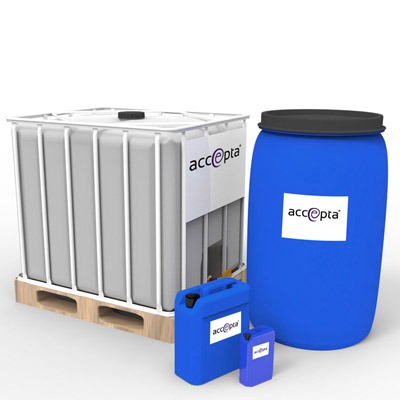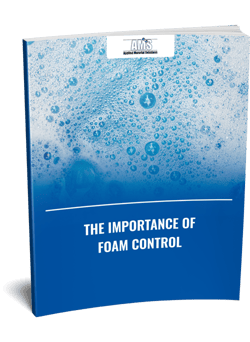The Function of Foam Control in Wastewater Procedure: Finest Methods and Techniques
The Function of Foam Control in Wastewater Procedure: Finest Methods and Techniques
Blog Article
A Comprehensive Overview to Carrying Out Foam Control Solutions in Your Procedures
Efficient foam control is an important element of functional performance that often goes neglected. Understanding the ins and outs of foam generation can substantially affect both productivity and item top quality. By taking a look at vital elements such as application compatibility and personnel training, companies can maximize their foam monitoring efforts.
Comprehending Foam Obstacles
Foam challenges are a considerable concern throughout numerous sectors, impacting operational effectiveness and item quality. The formation of excessive foam can hinder procedures such as blending, transportation, and storage, resulting in increased downtime and waste. In markets like food and drink, drugs, and petrochemicals, foam can hinder manufacturing lines, creating product disparities and contamination risks.
Furthermore, foam can obstruct devices performance, causing expensive repair work and upkeep. For circumstances, in wastewater treatment, foam can interrupt clarifier operations, leading to lower treatment efficiency and regulatory conformity concerns.
Comprehending the underlying reasons of foam generation is important for efficient administration. Variables such as surfactants, temperature level variations, and anxiety levels can all add to foam production. Identifying these elements permits markets to execute targeted methods that reduce foam formation while keeping product integrity.
Sorts Of Foam Control Solutions

Mechanical remedies include the usage of tools such as foam skimmers or defoamers. Chemical remedies, on the other hand, consist of the application of defoaming agents-- compounds that interfere with the foam framework, leading to its collapse. Foam Control.
Finally, functional methods concentrate on process modifications. This might entail modifying devices criteria, such as temperature and pressure, or altering the circulation prices of fluids to minimize foam generation. Carrying out great housekeeping techniques can additionally reduce foam development by lowering contaminants that contribute to foam stability.
Selecting the ideal foam control remedy entails analyzing the details needs of the operation, including the kind of procedure, the features of the materials included, and security considerations.
Choosing the Right Products
Choosing the ideal foam control items needs an extensive understanding of the certain application and its distinct difficulties. Elements such as the kind of foam, the environment in which it takes place, and the preferred result all play essential roles in item option. Foam Control. In markets such as food processing, it is crucial to select food-grade defoamers that comply with safety laws while successfully managing foam.
Additionally, take into consideration the viscosity of the fluid where the foam issue exists. Some products are created for low-viscosity applications, while others are tailored for thicker liquids. Compatibility with existing processes is an additional vital element; the picked foam control agents need to integrate seamlessly without interrupting overall operations.
An additional important element is the approach of application. Some items may call for dilution, while others can be applied straight. Assessing the simplicity of usage and the called for dosage can offer insights into the item's efficiency and cost-effectiveness.
Implementation Approaches
Effective execution methods for foam Foam Control control remedies call for an organized strategy that straightens item option with functional requirements. The primary step includes a thorough evaluation of the procedures where foam happens, determining particular areas that necessitate treatment. By involving cross-functional teams, consisting of manufacturing, design, and high quality assurance, organizations can collect insights that inform the choice of the most reliable foam control items.
Next, it is crucial to develop clear objectives for foam decrease, making sure that these goals are quantifiable and attainable. This may entail specifying acceptable foam degrees and the timelines for implementation. Educating personnel on the buildings and application techniques of picked foam control agents is equally crucial, as proper usage is essential for ideal outcomes.
Additionally, integrating foam control services into existing operations calls for cautious planning. Eventually, a well-structured method will certainly improve operational efficiency while successfully handling foam-related difficulties.
Monitoring and Examining Performance
Surveillance and evaluating the effectiveness of foam control services is necessary for ensuring that applied approaches generate the preferred results. This procedure involves systematic information collection and evaluation to analyze the performance of foam control representatives and techniques. Key efficiency signs (KPIs) ought to be established prior to application, permitting a clear baseline versus which to determine development.

Reviewing efficiency also calls for regular reviews of foam control treatments and agent efficiency. This can be completed through tasting and testing, enabling operators click for more to establish if present services are fulfilling operational demands. Moreover, it is essential to solicit responses from employee who connect with these systems daily, as their insights can disclose operational subtleties visit this site right here that measurable data might forget.

Eventually, a structured tracking and assessment structure helps determine essential adjustments, ensuring that foam control options continue to be effective, cost-effective, and straightened with organizational objectives.
Verdict
In final thought, efficient foam control services are necessary for maximizing functional effectiveness and preserving product quality. An extensive understanding of foam difficulties, integrated with the selection of appropriate items and execution methods, assists in the successful management of foam generation.
Applying excellent housekeeping techniques can additionally minimize foam development by minimizing impurities that contribute to foam security.
Choosing the ideal foam control products needs a complete understanding of the details application and its one-of-a-kind difficulties (Foam Control).Effective implementation approaches for foam control services require a systematic technique that straightens product option with operational demands.In final thought, reliable foam control solutions are crucial for optimizing functional effectiveness and keeping product high quality. A thorough understanding of foam difficulties, incorporated with the choice of ideal products and implementation methods, facilitates the successful monitoring of foam generation
Report this page